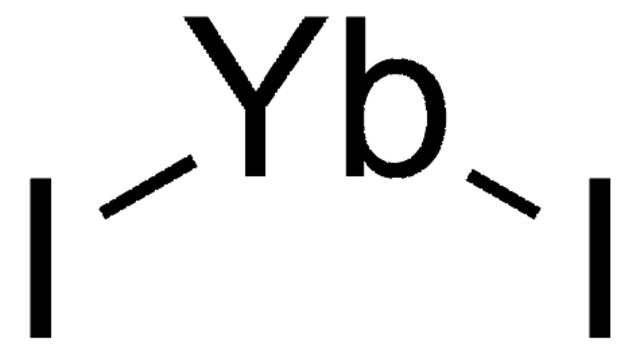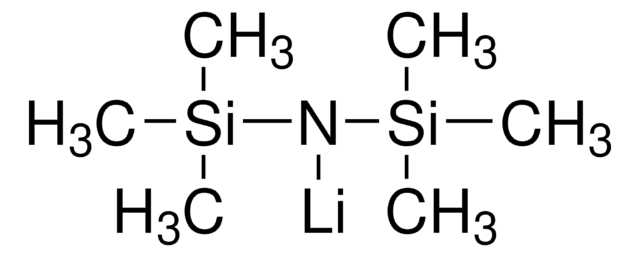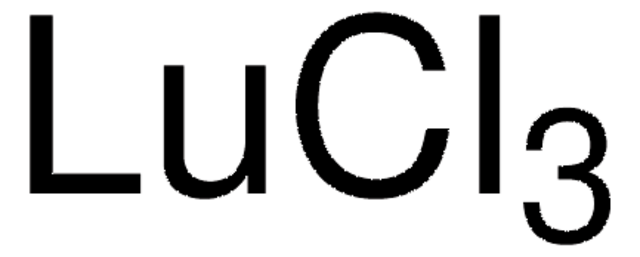Key Documents
547980
Tris[N,N-bis(trimethylsilyl)amide]samarium(III)
98%
Synonim(y):
1,1,1-Trimethyl-N-(trimethylsilyl)silanamine samarium(III) salt, Tris(1,1,1,3,3,3-hexamethyldisilazanato)samarium
About This Item
Polecane produkty
Próba
98%
Postać
solid
przydatność reakcji
core: samarium
reagent type: catalyst
mp
93-106 °C (lit.)
ciąg SMILES
C[Si](C)(C)N([Sm](N([Si](C)(C)C)[Si](C)(C)C)N([Si](C)(C)C)[Si](C)(C)C)[Si](C)(C)C
InChI
1S/3C6H18NSi2.Sm/c3*1-8(2,3)7-9(4,5)6;/h3*1-6H3;/q3*-1;+3
Klucz InChI
MUFPZLRACJKLCI-UHFFFAOYSA-N
Powiązane kategorie
Zastosowanie
- Heterobimetallic samarium(III) complexes
- Binuclear lanthanide complexes
Catalyst for:
- Coordination polymerization of renewable butyrolactone-based vinyl monomers
- Intramolecular hydroamination of non-activated alkenes
- Chiral functionalization of isoxazoles
- Enantioselective hydroamination / cyclization
Hasło ostrzegawcze
Danger
Zwroty wskazujące rodzaj zagrożenia
Zwroty wskazujące środki ostrożności
Klasyfikacja zagrożeń
Flam. Sol. 1 - Skin Corr. 1B - Water-react 2
Zagrożenia dodatkowe
Kod klasy składowania
4.3 - Hazardous materials which set free flammable gases upon contact with water
Klasa zagrożenia wodnego (WGK)
WGK 3
Temperatura zapłonu (°F)
36.0 °F - closed cup
Temperatura zapłonu (°C)
2.2 °C - closed cup
Środki ochrony indywidualnej
Eyeshields, Faceshields, Gloves, type P3 (EN 143) respirator cartridges
Wybierz jedną z najnowszych wersji:
Masz już ten produkt?
Dokumenty związane z niedawno zakupionymi produktami zostały zamieszczone w Bibliotece dokumentów.
Nasz zespół naukowców ma doświadczenie we wszystkich obszarach badań, w tym w naukach przyrodniczych, materiałoznawstwie, syntezie chemicznej, chromatografii, analityce i wielu innych dziedzinach.
Skontaktuj się z zespołem ds. pomocy technicznej![Tris[N,N-bis(trimethylsilyl)amide]yttrium](/deepweb/assets/sigmaaldrich/product/structures/867/983/5b7cb7cd-8879-49e4-a9d7-29c52aaa82a0/640/5b7cb7cd-8879-49e4-a9d7-29c52aaa82a0.png)





![1,8-Diazabicyclo[5.4.0]undec-7-ene, polymer-bound 100-200 mesh, extent of labeling: 1.5-2.5 mmol/g loading, 1 % cross-linked with divinylbenzene](/deepweb/assets/sigmaaldrich/product/structures/198/416/1df5854b-ea20-4d3a-a11f-73abb549da60/640/1df5854b-ea20-4d3a-a11f-73abb549da60.png)



